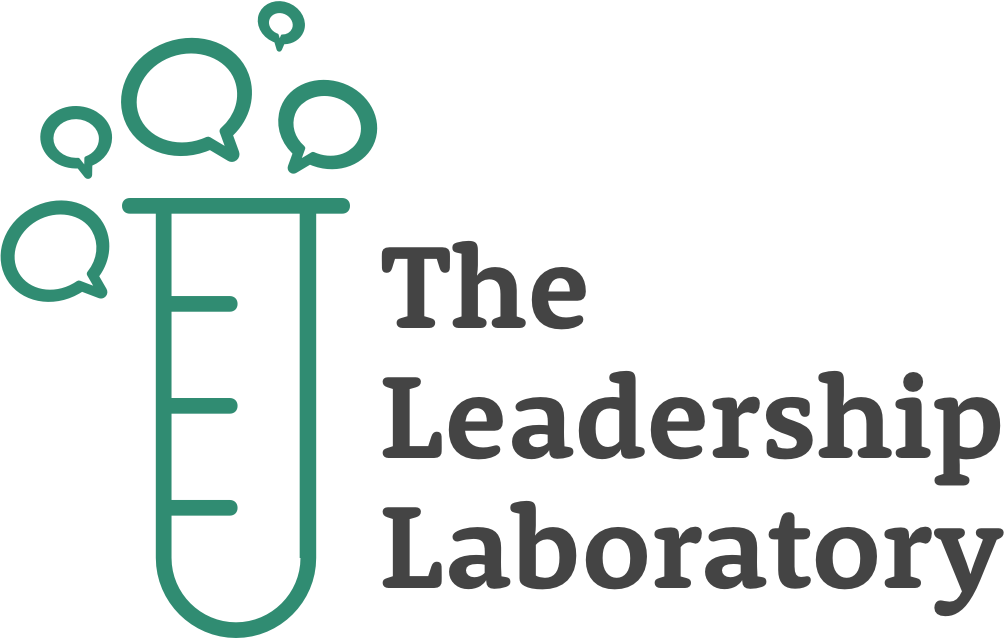Written by Jacob Goldstein — Executive Director
As was discussed in Part I, at The Leadership Laboratory, we provide workshops and learning experiences to teams, leaders, and executives for organizations across the United States and around the globe. While a percentage of our partnerships are one-off collaborations for retreats or team meetings, we collaborate with a number of organizations as a part of formal leadership development programs. Whether programming for new leaders, high-potential leaders, or executive leadership development, there are a number of considerations we’ve found are most helpful to consider as you put together your program.
In Part I of this discussion, we highlighted the processes used to determine the content, audiences, and outcomes of a leadership development program. Here, we’ll highlight additional considerations that can allow for a leadership development program to be as impactful as possible.
Manager Buy In: How can we ensure that leaders of leaders support this leadership development program?
When designing a leadership development program for participants, it is absolutely critical to get support from their leaders. Participants are being asked to devote time on this education, and for good reason: the overall objective of leadership education is to create even stronger, more effective, more efficient leaders, and this investment of time has the potential to pay dividends to employee engagement and retention, and successful implementation of strategic initiatives.
As a result of this investment of time, leaders need to know that their leaders encourage them to be fully present in the learning. At The Leadership Laboratory, we encourage our participants to be “selfish”, and that’s a good thing here; this is their time to invest in themselves. You likely remember the “oxygen mask” principle – we have to put on our own oxygen masks before helping others – and leadership development programming is geared to serve as that oxygen mask. In order for it to be successful, participants must be given explicit permission to be present; that means that their supervisors should step in to meetings in their place for the day, or direct reports should know to reach out to the participant’s supervisor instead during that time slot. The buy-in of the participant’s leaders gives each individual the opportunity to be fully invested in the learning journey.
In addition, buy-in from their manager also impacts long-term, positive behavior change. One of the best ways to synthesize the new knowledge from a leadership development program is to teach it to someone else. Bringing this information back to their supervisors and educating them about what was discussed not only helps the participant to make stronger connections to the material, but it also provides opportunity for discussion about how to best apply this content in-context, and provides a chance for the leader’s leader to share in the ownership of how the knowledge can best be applied.
Action Learning Project: How can an Action Learning Project support a leadership development program?
An Action Learning Project is an opportunity for individuals to apply the leadership philosophies they are learning to specific organizational objectives. It’s important to remember that the intention of the Action Learning Project should not be to serve as a working group to implement an executive leader’s project; the goal is not to have “free” consulting. As individuals working to enhance and elevate their strategic leadership skills, the Action Learning Project should allow for participants to scan the environment and find a challenge to tackle, with the objective of determining a scalable and implementable strategy to enhance or invent a process, program, or initiative that can positively change the trajectory of the organization.
An Action Learning Project is an incredible tool for team development, fostering relationships across the organization, and allowing participants to work together on challenges they would traditionally not be exposed to on a day-to-day basis. It’s also an opportunity to think like a senior level strategist, and develop the critical skills of design thinking, creativity, executive presence, persuasion, and relationship management. With a focus on implementation and sustainability, these are projects that can ideally be transitioned to a department or project owner to ensure that their iterations can continue to impact the organization for years to come.
Reflection & Action Planning: Why is reflection the most important part of a leadership development journey?
At The Leadership Laboratory, we protect the last portion of any learning experience for reflection and action planning. Reflection is the cornerstone of any sort of growth; in order to be able to grow, in order to be able to get to the next level, we have to stop, reflect, and identify what it is that we have learned, and determine how we can apply it to our work and our lives. Leadership Development Programs are fantastic tools at providing new knowledge and education, and the critical next step is for participants to determine how to best implement this new information and hold themselves accountable for bringing these practices to life.
As a part of your leadership development programming, it’s traditionally impactful to end the session with individual and group reflection of key takeaways, and allow for individuals to identify specific actions they will take as a direct result of the program. For leadership development programs with multiple touchpoints, start each new session with a recap of the previous one, and provide an open space for individuals to share out their discoveries of what happened once they implemented the content. This not only encourages accountability, but also allows for the direct application of the new material discussed in that day’s session to connect to what they’ve already learned.
Accountability & Measurement: How do you measure the success of a leadership development program?
When it comes to measurement, at The Leadership Laboratory we typically recommend Kirkpatrick’s Model of Evaluation for internal teams to measure the impact of the program. Here, our focus is on Level III and Level IV impact. Specifically, what is the behavior change noticed as a direct result of this program, and what is the impact on business results that are tied to the education provided in this leadership development program.
When designing the measurement of your program, many of the metrics should have already been determined as a part of the backwards design theory process that was used to start off the strategy. As you used those goals and outcomes to determine the makeup of the program, those same objectives can now be the metrics you are looking for. Where have participants change their behavior? To what degree has their confidence increased as a leader? Beyond formal assessment tools like surveys, measuring statistics like promotions or performance review ratings / feedback can be a strong way to determine the impact of the leadership development programming provided.
From an accountability perspective, much of this can also be shared with the participant and their manager. How are they continuing to report back to their manager about key changes they are making to their leadership behavior as a result of the program? What connection points can be provided between participants in-between the leadership development workshop touchpoints? Creating continued connection and reflection opportunities for participants serves as a vital step in designing a program where participants feel accountable to one another to best apply the content, and allows for even more tangible measurement of the impact of your leadership development program.
The Leadership Laboratory is a nation-wide, Chicago-based learning and leadership development company. We build and facilitate custom team and leadership development workshops aimed at transforming the way we lead our work and people. Through interactive workshops, participants will experience customized professional development for emerging and new leaders, established and senior leaders, and teams of all sizes. Feel free to browse our website, www.leadershipdevelopmentlab.com, to learn more about our team building workshop and leadership development programs.

